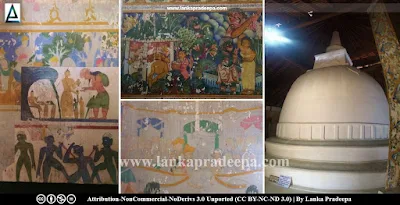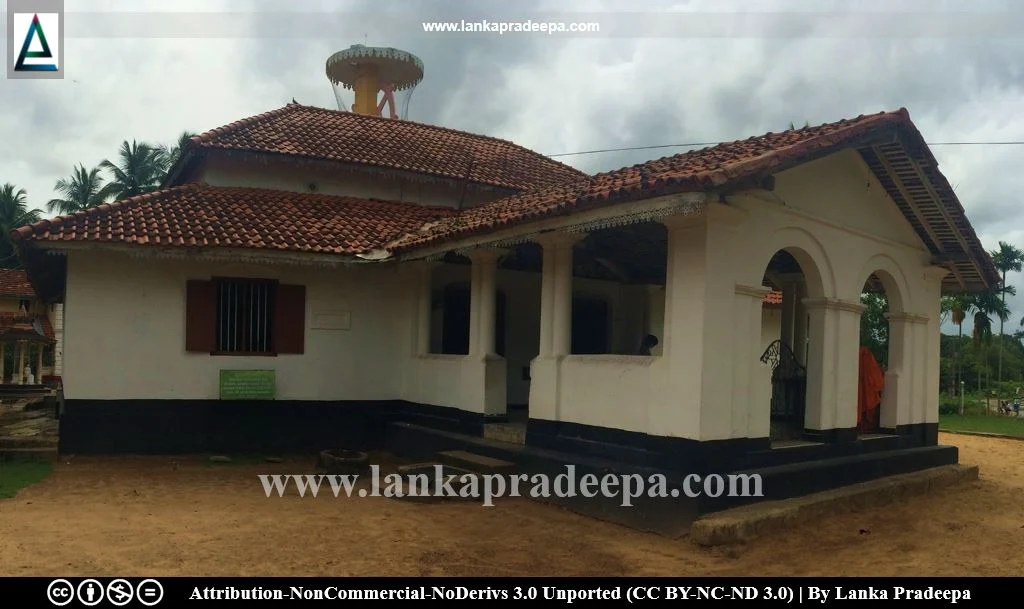
Dadagamuwa Raja Maha Viharaya, also known as Sumitta Sri Sunandaramaya (Sinhala: දඩගමුව රජ මහා විහාරය, සුමිත්ත ශ්රී සුනන්දාරාමය; Tamil: தடகமுவ ரஜமஹா விகாரை), is a Buddhist temple situated in Dadagamuwa village in Gampaha District, Sri Lanka.
History
The history of the Dadagamuwa temple goes back to the time of the Anuradhapura Period. It is believed that this temple was established during the reign of King Devanampiyatissa (247-207 B.C.) by a minister named Sumitta (Dissanayaka, 2015). It is mentioned in ancient texts that after the king gave Sumitta the Dadagamuwa region, he developed agriculture in the area and erected the temple to fulfil the religious needs of the locals. According to Rasavahini, the ancient name of the Dadagamuwa area was Dandagona-grama (Dissanayaka, 2015). It is also said that the first group of Buddhist monks of this temple belonged to the lineage of Aritta Thera, the first Arhat of Sri Lanka (Dissanayaka, 2015).
The Temple
The temple mainly consists of an image house, a Stupa, a Bodhi tree, monks' dwellings, and a Vatadage. The ruins of ancient structures such as Nidan-gala, Padalas-gala, and stone pillars indicate the antiquity of the temple. Out of the monuments situated at the temple premises, the Vatadageya and the image house are archaeologically important.
Dadagamuwa Vatadage

Built on the centre part of the temple premises, the Vatadage at Dadagamuwa Viharaya is a quadrangular house enclosing a small Stupa. The house is 11 m in both width and length (Dissanayaka, 2015). The roof of the house consists of two decks (upper & lower) sloping in four directions and the top of the roof ends with a pinnacle. The upper roof is borne by four pillars erected around the Stupa while the lower roof is supported on the walls as well as 20 circular pillars of the outer corridor (Dissanayaka, 2015).
The inner side of the walls of the Vatadage as well as the four pillars around the Stupa are adorned with murals of Buddhist themes. Two rows of paintings depicting Jataka tales such as Sambula, Kusa, Themiya, Dahamsoda, etc. are found among them. These paintings are said to have been done during the period between the latter part of the 19th century and the beginning of the 20th century. There are some paintings on the back wall which are incomplete. However, some traces of ancient paintings belonging to the Kandyan Period are found on the walls where the modern paintings peeled off (Dissanayaka, 2015).
The Image House & the Bodhi Tree
The image house, according to the date denoted above the entrance door, was built on 2 September 1905. The Bodhi tree is considered to be one of the saplings of Jaya Sri Maha Bodhiya at Anuradhapura.
A Protected Site
The ancient Vatadageya and the image house in the premises of the Dadagamuwa Raja Maha Vihara in the Divisional Secretary’s Division of Attanagalla are archaeological protected monuments, declared by a government gazette notification published on 8 July 2005.



References
1) Dissanayaka, S. B., 2015. Administration report of the director-general of archaeology for the year 2015 (Sinhala). Department of Archaeology. ISBN: 978-624-5840-24-3. pp.56-57.
2) The Gazette of the Democratic Socialist Republic of Sri Lanka. No: 1401. 8 July 2005.

